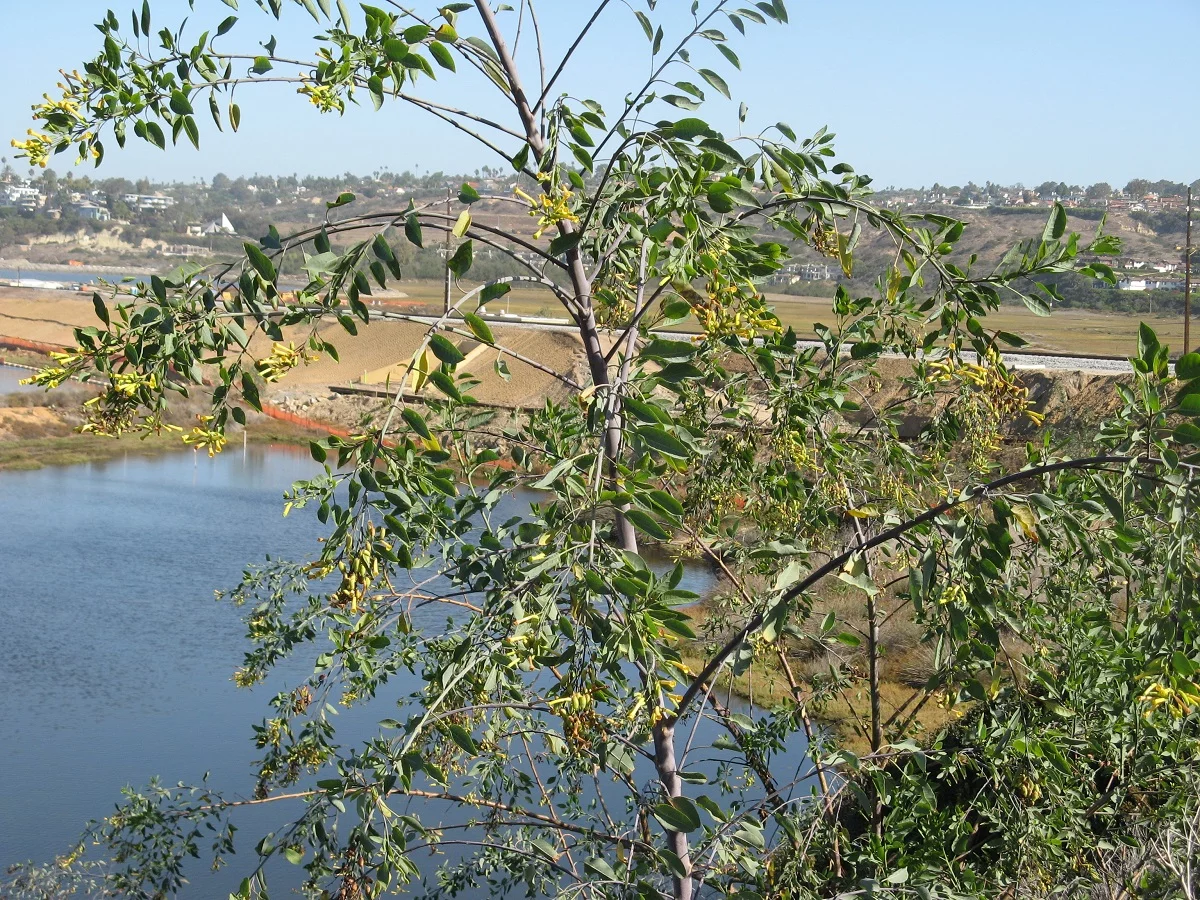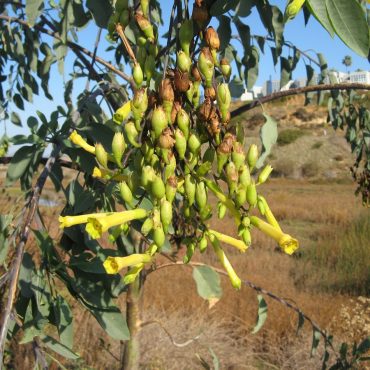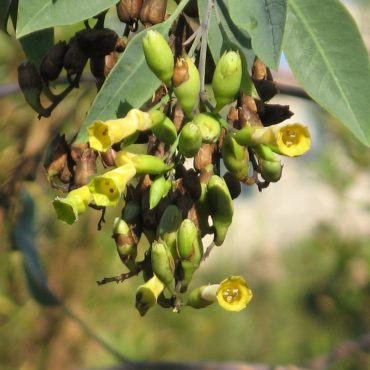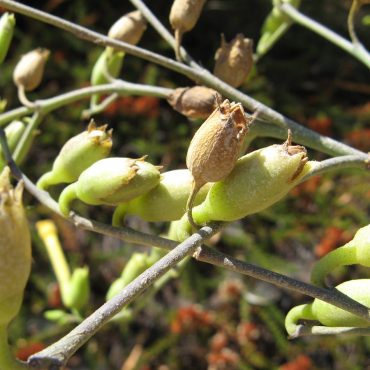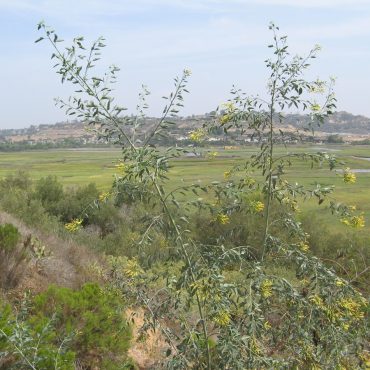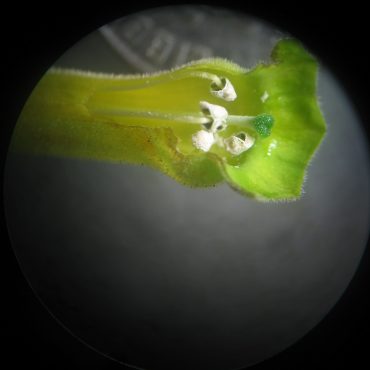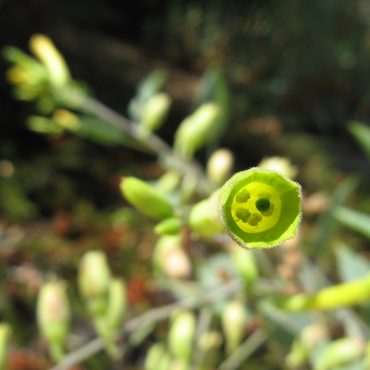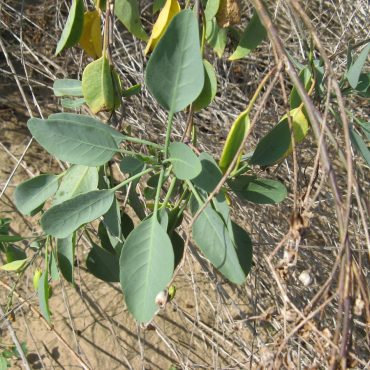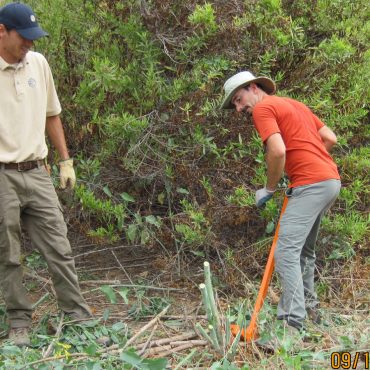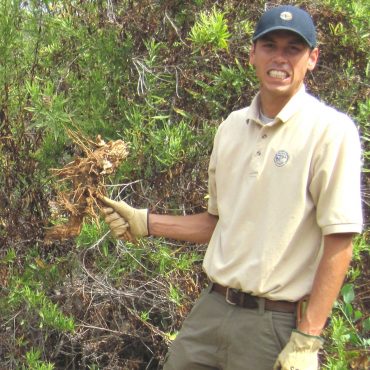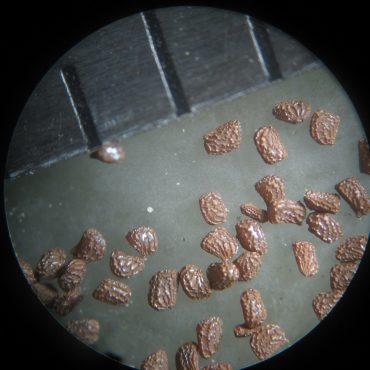Description
4,23,34,59
Tree tobacco is a small, open tree usually less than 20 feet (6 m) tall with arching or drooping branches. It is variously described as “spindly”4 and “straggling” 23, and “rangy”.444 The stems and leaves are blueish green, dusted with fine, waxy particles (glaucous). The leaves are generally oval in shape, shorter than eight inches (20 cm), and often with an acute or pointed tip. Petioles are somewhat shorter than the leaves. The leaf surface is smooth and rubbery to touch, and margins lack teeth.
Flowers occur in large, branched, terminal clusters that may contain blossoms and seed pods in all stages of development and in all seasons of the year. Flowers are symmetrical and bisexual. The calyx is five-lobed and persists around developing fruits. Five yellow petals are united into a long narrow tube, constricted before the mouth where the short lobes flare outward. Flowers are up to 1½ inches (4 cm) in length and are often tinged with green, especially near the mouth. There are five greenish-white stamens that do not project from the flower mouth; when open to shed pollen, the anthers resemble little mushroom caps. There is one pistil with a superior ovary and one style that holds the stigma just beyond the anthers – close to the flower mouth. The stigma is green with two lobes. The major bloom period is March – Sept.7 but flowers and seeds are found all year.
The fruit is a smooth, ovoid capsule, about a ½ inch (1.3 cm) long, surrounded by the brown calyx, which may be intact or split. The capsule splits from the tip, releasing numerous tiny brown seeds that are irregular in shape (mostly oval or D-shaped) and have a sculptured surface.

